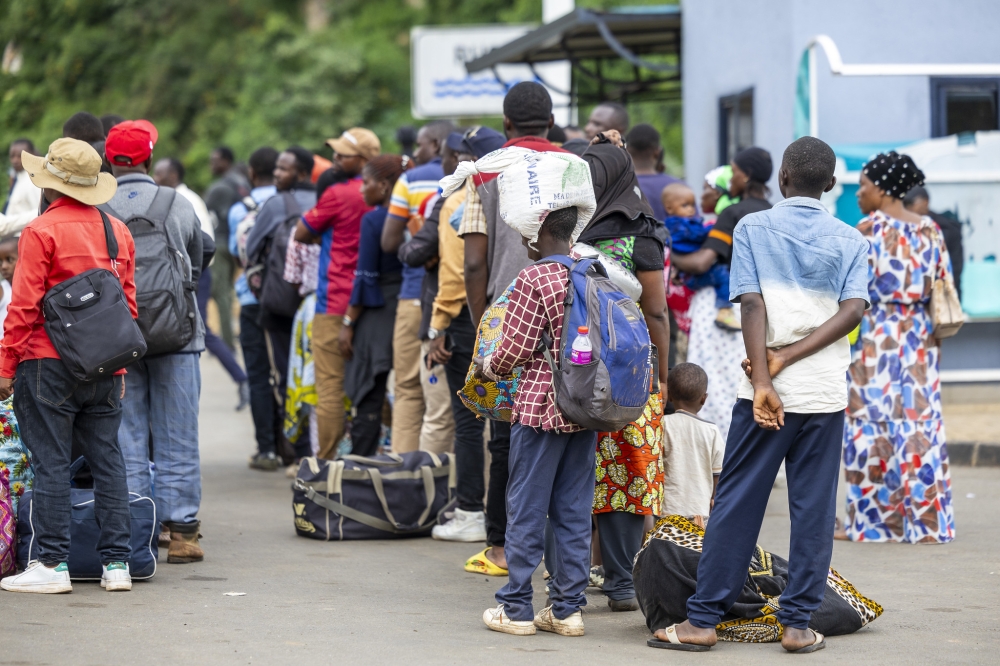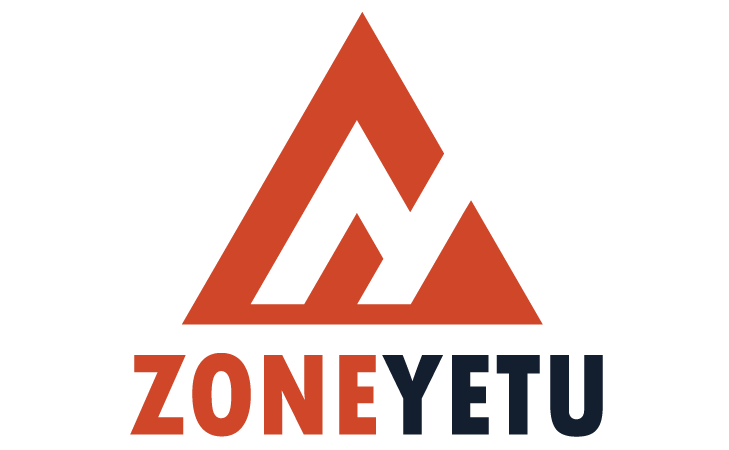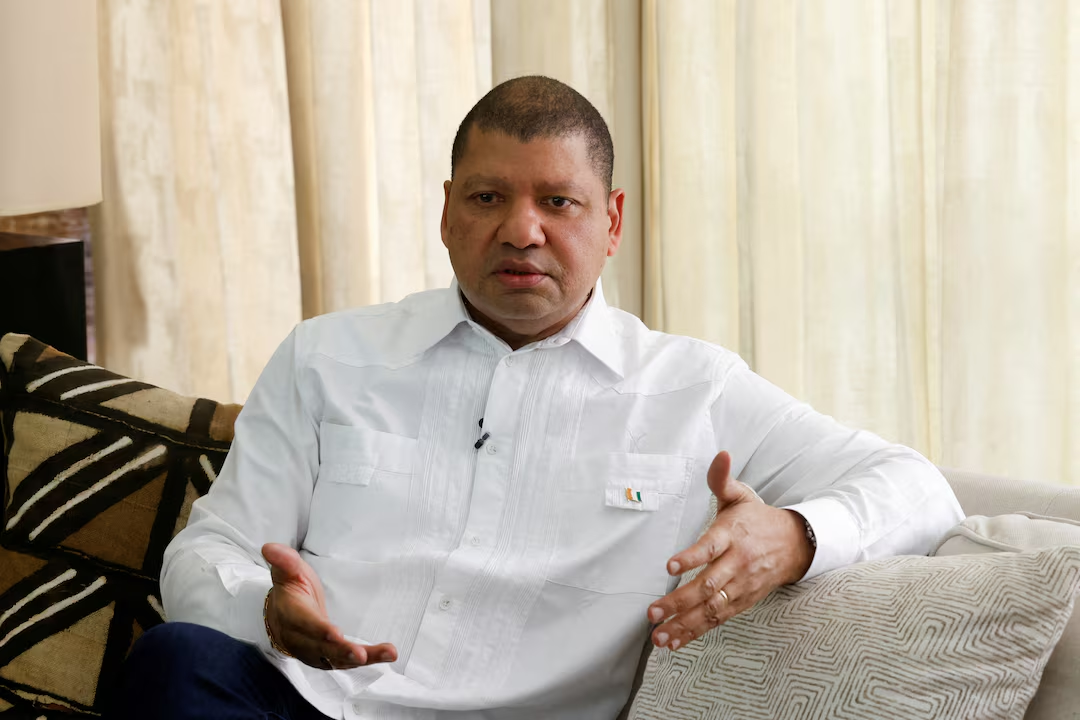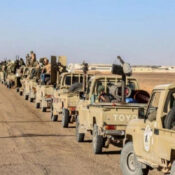
Three kilometers from the Rwandan border, within the FDLR frontline base
The FDLR militia, a US-and UN-sanctioned terror group created by fanatics connected to the 1994 Rwandan Genocide against the Tutsi, had gotten perilously near to the Rwandan border in the days before the M23 rebels took control of Goma last month.
According to The New Times, the organization created a significant base in Kanyamahoro in Nyiragongo region, which is 21 kilometers north of Goma and the most advanced of FDLR and DR Congo’s deployments.
Within three kilometers of Rwanda, Kanyamahoro is a strategically significant location that looms above Munege cell in the Busasamana sector of the Rubavu District.
It was occupied by the Commando de Recherche et d’Action en Profondeur, or CRAP, an elite FDLR special squad.
Given that there is a Rwanda Defense Force facility in Busasamana, just across the border, this deployment was a daring move by the militia.
The M23 rebels now control the area after marching onto South Kivu and taking control of its city, Bukavu, on Sunday.
in least 400 FDLR fighters are thought to have been stationed in Kanyamahoro, which is about 1 km from Kibumba along the Goma-Rutshuru axis, and hundreds more are thought to have been nearby.
The important outpost is encircled by trenches and mounds of sandbags and overlooks Rwanda’s Busasamana area in Rubavu.
Last Tuesday, February 11, we went to this FDLR/CRAP position and took a tour of the command post and communication trenches. We learned that one Major Benjamin Nimubutumwa, a CRAP commando, was in charge of the post.
The militia leader planned and oversaw their actions in the war room, which is located within the command post and has two anti-tank weapon boxes, an old bench, and a table.
Additionally, there are several communication devices.
The commander’s bedroom, which had a dirty Victoria mattress, was located farther inside. Trees, sandbags, tins, and plastic sheeting are used to construct the edifice.
“Omega relocated their base nearer to Rwanda.”
Several prominent hills west of Kanyamahoro were occupied by defensive rear troops, and this frontline position was a part of a network of FDLR positions spanning a wide area of highlands. Kanyangoma, the nearest of these hills, is 5 km distant. Amabere y’Inkumi, Nyamushwi, and Kanyabuki hills are also the bases for FDLR. Mount Nyirangongo casts a shadow across these hills.
The group’s senior military leader, “Maj Gen” Pacifique Ntawunguka, also known as “Omega,” had his camp behind Kanyangoma, in a community called Kamugogo, some 10 kilometers from Kanyamahoro, according to a security source familiar with FDLR deployments in eastern DR Congo.
According to reports, Omega apparently moved closer to the Rwandan border when the recent war between Congo government troops and M23 began, establishing new headquarters in Kamugogo, which is just 10 kilometers from the border. His primary base was formerly thought to be in the Rutshuru area in a place called Paris, around 60 kilometers from the Rwandan border.
The insider stated, “It is safe to say that Omega was literally in the area of Kanyamahoro where his frontline fighters were.”
The New Times discovered that Omega might not have perished as first reported; according to one source, he might have managed to elude the M23 attack on FDLR positions. He is thought to have melted farther into the untamed forests around Mount Nyamuragira, along with hundreds of FLDR fighters.
We also learned that some FDLR militants abandoned their military fatigues and vanished into civilian areas, while others withdrew with the other FARDC-led coalition forces into South Kivu.
Some, including “one very senior officer, at the rank of a Brigadier General, who was arrested hiding in a suburb of Goma around February 7,” have subsequently been apprehended.
“A component of the DR Congo’s military expansion”
According to a source, FDLR had previously had a modest observation station near Kanyamahoro. When they were incorporated into DR Congo’s military combat effort against the M23, they upgraded it to a full-fledged facility.
He said that the FDLR deployment was a component of a larger DR Congo army build-up close to the Rwandan border.
The “offensive posture by FDLR meant that, most likely, they already had a screen force (a smaller layer of fighters) a lot closer to the Rwandan border, some possibly even with one leg inside Rwanda,” according to a former RDF Colonel who talked to The New Times in the days after our visit.
Additionally, sources cited what they called a comprehensive strategy by DR Congo and its supporters to attack Rwanda under the guise of Kigali’s assistance for the M23 rebels, a charge Rwanda has denied.
As the first line of defense and offense against the M23 rebels and, eventually, Rwanda “which had been identified as the ultimate target of the coalition operations,” they emphasized the importance of the FDLR’s deployment at Kanyamahoro.
The FDLR, DR Congo Forces (FARDC), Southern African Development Community (SADC) forces, United Nations Organization Stabilization Mission in the Democratic Republic of the Congo (MONUSCO), and European mercenaries were all participating in the complex contiguous deployment posture that they also mentioned.
Between Kibati and Kanyamahoro, the New Times visited all six of the coalition troops’ facilities in close proximity to one another, with the FDLR/CRAP base being the most sophisticated.
The base of Kirimanyoka
The FARDC’s elite Hiboux (special forces) and presidential guard troops were the nearest coalition deployment after Kanyamahoro, located in Kirimanyoka, approximately 3 km from Kanyamahoro and heading toward Goma.
An M23 commander informed us that during the action here, M23 captured heavy weaponry, including as a BM-21 Grad, a multiple rocket launcher capable of firing 40 rockets up to 40 kilometers in 20 seconds.
The camp also has 107 Katyusha rocket launchers with an 8km firing range and 122m D30 howtzers, which can accurately strike a target within 15km. This implies that some of these weapons may readily hit targets in Musanze District from this position. According to one of the informants, “they had coordinates of RDF bases in Bigogwe and Mudende, which are 13km-15km away.”
A 20mm anti-aircraft gun with a range of up to 1500 meters was also discovered near to the command post when we visited this encampment last week.
With many trenches and a long defensive line constructed with mounds of sandbags that may sometimes reach heights of several meters, the base is well protected. UN or humanitarian agency labels were present on some of the supplies used to construct the campsite.
The M23 had to strike on several fronts in order to capture this stronghold, with one of its troops moving behind enemy lines before launching an attack at daybreak on January 4. Before M23 captured the base, the combat here lasted eight hours. In the process, a FARDC colonel and 150 of his soldiers were taken prisoner.
“Armageddon”
The SADC-run Armageddon training camp at Kibati is about a kilometer away from Kirimanyoka military base. Satan II, a FARDC special force battalion, was stationed at the site.
The term Armageddon has often been described as the “final and conclusive battle between the forces of good and evil”. Also found in the Bible, in the Book of Revelation, this term carries a similar meaning to ‘apocalypse’, a term infamously used by key masterminds of the Genocide against the Tutsi. This raises questions about the motivations of individuals in charge of this military installation in Kibati, which is close to the Rwandan border.
Meanwhile, the most deadly nuclear missile in the world is referred to as “Satan II.” Numerous shooting range spaces—areas with targets for supervised shooting practice—are available on the base.
The Armageddon military training camp oversees a range of hills and mountains, which were occupied by FDLR’s protective units, including Kanyangoma, Amabere y’Inkumi, Nyamushwi, Kanyabuki, and Nyiragongo.
According to the M23 officers who accompanied us on the tour, there had been an attempt to link the two positions to enable a seamless supply flow to the FDLR position at Kanyangoma hill, which is located about three kilometers north of Armageddon.
With the use of a microscope, we were able to see a bulldozer abandoned close to the foot of Kanyangoma hill across from the previously SADC-run training facility, which M23 says was being used to literally pave a road to the FDLR position.
“This is one among lots of pieces of evidence showing how FDLR was an integral part of the operations by FARDC and its allied forces and militias,” an M23 Major told us.
Collocation of MONUSCO and mercenary camps
From here, we headed to Trois Antennes on the edge of Kibati to see what we were told was a base of European mercenaries who were fighting alongside FARDC and its allies, including SADC forces, Burundian troops as well as FDLR and the local Wazalendo militias.
But, on our way to this ‘mercenary base’, we drove past a MONUSCO camp, roughly 2km from the Armageddon. This is one of the two bases that MONUSCO maintains in the area, the other situated on a hill (known as Kiringo) just adjacent to Trois Antennes, where European mercenaries were based.
Both the United Nations (1998) and African Union (1977) prohibit the use of mercenaries, long associated with wanton human rights violations.
At Trios Antennes, we met a mother with two children, who told us that “this hill used to be occupied by white men” and claimed that “there was regular interaction between them and those on that hill”. She was pointing at Kiringo, where MONUSCO still maintains a base. The two hills are connected by a narrow valley.
The majority of MONUSCO contingents do not have an offensive mandate, but the peacekeepers have often provided support, including air cover, to Congo’s troops in operations against M23.
Still, within MONUSCO, there is a combat wing that was first deployed in 2013 with an offensive mandate, comprised of troops from three SADC countries, namely, South Africa, Tanzania and Malawi. This is the same MONUSCO component, known as Force Intervention Brigade, that helped expel M23 from Goma and the rest of DR Congo territory in 2013.
‘Leave FDLR alone’
However, after they defeated M23 they downed their tools and did nothing to disarm the genocidal FDLR, which lies at the heart of tensions between Rwanda and DR Congo.
“After FIB’s operations against M23, the next group to tackle was the FDLR, but the Congolese government told them to leave FDLR alone,” a MONUSCO employee whom I met in Goma last week told us on condition of anonymity.
But there have also been suggestions that MONUSCO was unwilling to help eliminate the FDLR, which has continued to prey on Congolese citizens, particularly targeting Rwandophone communities, especially the Tutsi.
Notably, the countries that deployed troops under FIB more than a decade ago are the same SADC nations that raised combat troops for SAMIDRC slightly over a year ago. FIB also continues to exist.
Asked what this continuous deployment of the coalition partners on this axis, and the positioning of FDLR closest to the Rwandan border meant, the retired Colonel we spoke to last week, said, “It’s clear they were all working together, they were so close to one another, and they had one mission: to invade Rwanda.”
“To have FDLR as the forward deployment was strategic, they are the ones who knew Rwanda better than the others and they have had a long-term plan to destabilize Rwanda.”
He also said that, from a strategic and tactical perspective, the disposition of the FARDC and its allies, including FDLR, between Kiringo and Kanyamahoro, had been meticulously thought out. He added that these military positions were being protected by friendly units occupying dominating features northwest, including Mount Nyiragongo.
Multiple sources we spoke to share this view, with the MONUSCO staffer whom I spent time with on my first day in Goma on February 7 even stating that an old classmate of his, now a self-proclaimed Major in the Wazalendo ranks, had confided in him that a plan had been mooted to attack Rwanda. He even advised him to move his family from Rwanda for their safety.
Aside from MONUSCO troops, which still occupy their positions, all the other military bases we visited are under the control of M23.
‘No more evidence needed’
Th M23 officer who was with us as we visited these installations was the same commander who showed us around at Goma airport the previous day, including during a tour of the main joint command center of FARDC, MONUSCO and their allies, including FDLR elements.
President Felix Tshisekedi has publicly stated his desire to help remove the government of Paul Kagame in Kigali, with his wife, Denise Nyakeru Tshisekedi, even paying a visit to injured FDLR/CRAP combatants at a hospital in the capital Kinshasa last month.
“I guess that we don’t need any more evidence of the support that this Rwandan genocidal force, which has spread its extermination ideology to the whole FARDC military coalition, benefits at the highest level in Kinshasa,” Rwanda’s Foreign minister Amb. Olivier Nduhungirehe said after a photo of Nyakeru and the FDLR fighter, with prominent arm tattoo reading, CRAP, emerged on social media.
In the battlefield, the rebels are outnumbered and outgunned by the government coalition forces (a conservative estimate put the latter’s strength in and around Goma before M23 takeover to nearly 60,000), but they often deal with this by mostly deploying a pincer movement strategy. This allows the M23 to mount simultaneous offences from different directions, overwhelming the enemy in the process.
This was the case when the rebels captured key localities, such as Kanyarucinya, and Sake and Mubambiro, north and west of Goma, respectively, as they marched on the capital of North Kivu province last month.
After seizing Bukavu on Sunday, the M23 again called for peace talks with Tshisekedi’s government, which it accuses of discrimination and ethnic cleansing, but Kinshasa has repeatedly ruled out dialogue with the rebels favouring a military solution instead.
All Categories
Recent Posts
Tags
+13162306000
zoneyetu@yahoo.com


